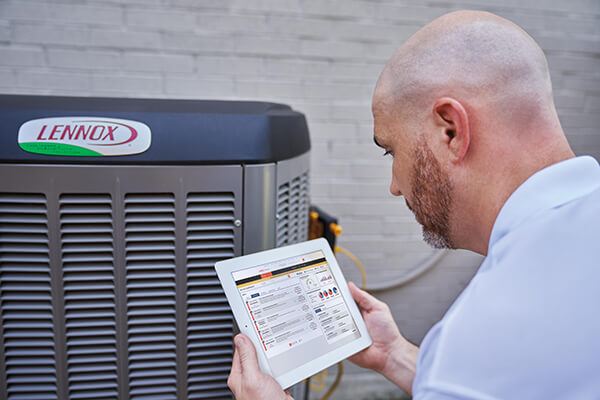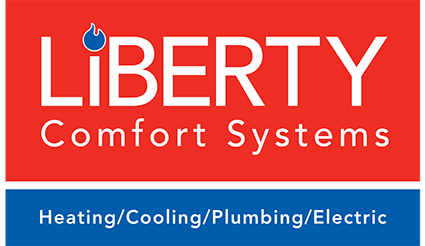
If you are reading this article you may be wondering if Multi-Zone HVAC Systems are right for your home. With a Multi-Zone HVAC system, you can selectively alter the temperatures in occupied spaces and without wasting energy. Read on to learn more about what a zoned HVAC systems is and how it works.
What is a Multi-Zone HVAC System
A Multi-Zone HVAC (Heating, Ventilation, and Air Conditioning) system is a setup that divides a building or living space into multiple zones, each with its own thermostat and individual temperature control. This is achieved by using multiple indoor units (like air handlers or ductless mini-splits) connected to a single outdoor unit. The system allows for precise climate control in different areas, optimizing energy efficiency and providing customized comfort throughout the space.
A Multi-Zone HVAC system is like having multiple thermostats for different rooms in your home. It allows you to control the temperature independently in various zones, providing personalized comfort and energy efficiency. So, everyone can enjoy their preferred climate without affecting the whole house.
The Basics of Multi-Zone HVAC System Designs
There isn’t one HVAC zoning solution that’s guaranteed to work well for every Minnesota home. Instead, there are several primary ways of streamlining heating and cooling equipment for more needs-specific service. These include:
- Installing manual HVAC dampers
- Installing automatic HVAC dampers
- Having two separate HVAC systems that service separate zones or separate floors
- Having a ductless mini-split heat pump or air conditioner put in
Small to medium-sized homes that have just one story often have one set of heating and cooling units, one ductwork system, and a single thermostat. In these homes, the HVAC system establishes and maintains the temperature that’s been set at the thermostat throughout all rooms.
In multi-story homes, separate HVAC systems that are serviced by their own duct systems are often necessary. For instance, if you have a large, two-story home, you might have a thermostat upstairs and one downstairs. In this setup, you can adjust the upstairs temperature of your home independent of the downstairs thermostat setting. This is one basic and very common form of HVAC zoning.
In other instances, HVAC ductwork is sectioned off into separate service areas using automatic HVAC dampers. Dampers open and close to either permit airflow to specific areas or inhibit it. Each zone has its own thermostat, and each thermostat communicates with a central control box. With this type of HVAC zoning, you can establish different temperatures in different zones or rooms even though the entire building is serviced by just one HVAC system.
Manual dampers are currently the cheapest option in HVAC zoning. However, they are also the least efficient and least convenient. Manual dampers are often installed on the trunk duct. During different seasons, you can selectively open and close these to better direct heated or cooled air throughout the building. There is no exact science to this process and manual dampers don’t always work the way in which consumers want them to.
Ductless Mini-Split Heat Pumps and Air Conditioners
Ductless mini-split heat pumps and air conditioners are relatively new options in heating and cooling technologies. They’re incredibly efficient, and they’re easily the most cost-effective choice for heating and cooling older homes that lack existing ductwork. More importantly, these products have popularized the concept of zoned heating and cooling by proving how much more comfortable and efficient it can be.
While central air conditioners have an indoor compressor and an outside condenser unit, multi-split ductless air conditioners have an outside condenser and multiple indoor air handlers. Each air handler has its own thermostat so that residents can create their ideal temperatures in whichever zones or rooms they’re in. When a room or zone isn’t being used, its respective air handler can be turned off without affecting temperatures in other areas.
How Zoned Central HVAC Systems Work
The individual thermostats in zoned central HVAC systems transmit “calling” and “satisfied” signals to a central control box. The sensors in this box carefully monitor the communications coming from each thermostat and initiate the opening and closing of HVAC dampers to coordinate the flow of heated or cooled air as needed. When one zone or room has reached its preferred temperature, “satisfied” signals sent by its thermostat will cause one or more HVAC dampers to close. This way, heated or cooled air will bypass this area and be distributed to spaces that actually need it.
Why Installing Automatic HVAC Dampers Is Preferable to Closing Air Vents
Given that zoned central HVAC systems work by opening and closing HVAC dampers, you may wonder whether it’s possible to get similar benefits by simply opening and closing air vents throughout the building. After all, closing off an air vent in an unused room will block the flow of air in much the same way that closing an HVAC damper for this service area will. However, although a closed HVAC air vent will inhibit airflow, it won’t lower your home energy bills. Your HVAC system will continue using the same amount of energy despite the vent’s closure. In fact, it may even use far more.
Closed HVAC air vents place a significant amount of stress on heating and cooling systems by causing air pressure to build within their ductwork. Closing dampers in an HVAC system that’s been professionally zoned does not. Zoned HVAC systems have measures in place for preventing this from happening. These air pressure mitigation strategies can include bypass air ducts, larger duct sizes, and other elements that are specific to the needs of the building. While closed air vents provide noticeable, short-term changes in indoor temperatures within specific zones, zoning does this in an ongoing way that also allows for improved efficiency, less energy waste, and lower home heating and cooling costs overall. More importantly, zoning doesn’t diminish the lifespan of heating and cooling equipment by accelerating normal wear.
The Benefits of Zoning Your HVAC System
The most obvious benefit of HVAC zoning is that it can help you lower your overhead costs. With HVAC use accounting for approximately half of your home energy bill, improvements in this area are guaranteed to be noticeable right away. However, zoning provides a diverse range of additional benefits. It can be especially helpful in homes in which residents have dramatically different preferences for indoor temperatures. For instance, if you’re always hot but everyone else in your household generally runs cold, you can have cooled air flowing to your room all of the time, and everyone else can have their dampers closed. Being able to adjust temperatures at individual thermostats makes it possible for everyone to create their ideal temperatures.
Although central HVAC systems are meant to heat or cool homes uniformly, they’re not always able to accomplish this. This remains true even when the right size heating and cooling equipment is installed, and when everything is being diligently maintained. Some rooms may have more heat-generating appliances than others, and some rooms may get more natural light. You might have a drafty basement or other remote areas that you’ve converted into a den or family room, or you may have upstairs spaces that retain heat no matter how hard your air conditioner works. With zoning, these spaces can get the additional airflow they need to maintain comfortable, static temperatures.
Is HVAC Zoning Right for Your Home?
Zoning is an excellent way to streamline your central HVAC system for efficiency. However, it isn’t right for every home. Some households with remote areas of the building that aren’t being properly serviced by the current heating and cooling set-up may be more effectively addressed with a ductless mini-split air conditioner or heat pump.
If you’re tired of paying unnecessarily high energy bills due to heating or cooling rooms that aren’t being used, or if you and other residents have significant differences in the indoor temperatures you prefer, having your HVAC system zoned could be the best solution. Zoning your current heating and cooling equipment is also a great way to increase the value and marketability of your home.
Liberty Comfort Systems provides reliable plumbing, heating, and cooling services to residents of Anoka, Minnesota, and the surrounding areas. We offer basement finishing, indoor air quality, and duct cleaning services. If you’re interested in having your central HVAC system zoned, call us today.

